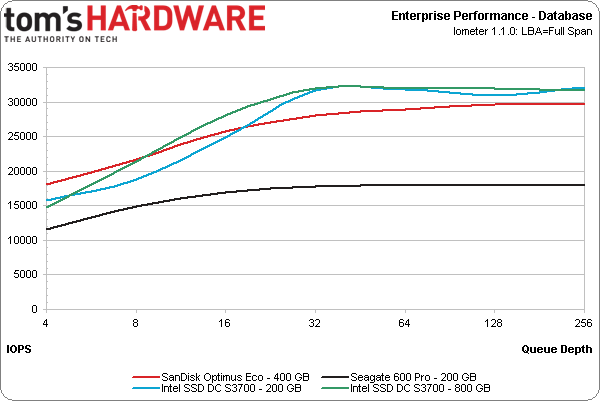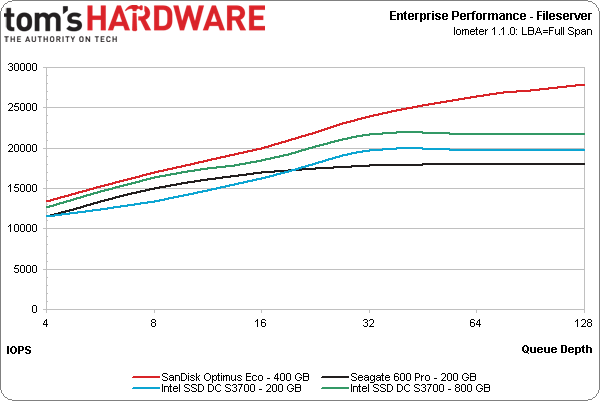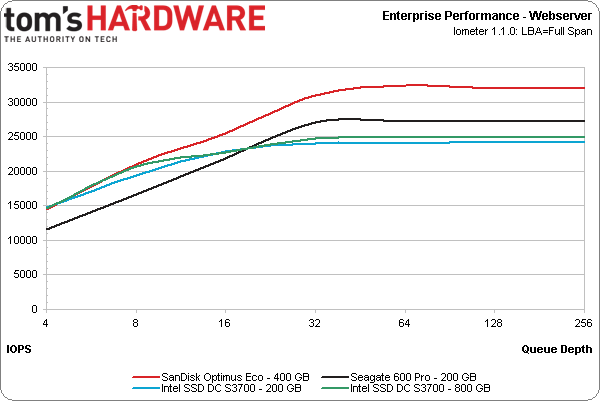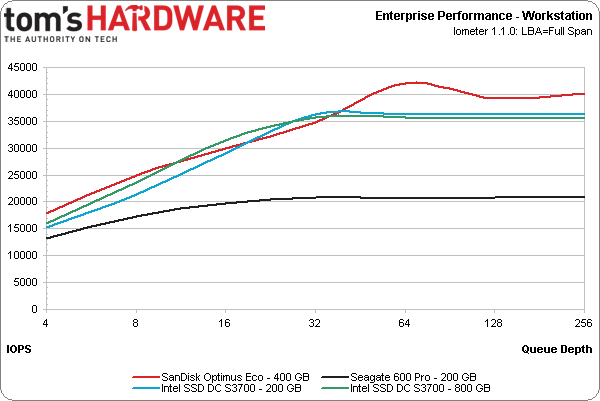SanDisk Optimus Eco SSD: A SAS Interface And Up To 2 TB Of Flash
Consolidation drastically changed the face of enterprise solid-state storage in 2013. One of the bigger moves was SanDisk's acquisition of SMART Storage Systems. Today, we're looking at the first branded SAS-based SSD to come from that purchase.
Results: Enterprise Workload Performance
Our next set of tests simulates different enterprise-oriented workloads, including database, file server, Web server, and workstation configurations.
The database workload (also categorized as transaction processing) involves purely random I/O. Its profile consists of 67% reads and 33% writes using 8 KB transfers.
Both Intel drives and SanDisk's Optimus Eco fare similarly when you average them out. Interestingly, though, the Eco enjoys its advantage at the start of this test, in sharp contrast to what we found testing 4 KB blocks of data randomly. Intel's SSD DC S3700 pulls away as queue depths increase, though.
The file server workload, which consists of 80% random reads of varying transfer sizes, yields a clear win in favor of the Eco. Better random and sequential read performance is enough to outpace Intel.
The Web server workload (100% reads, varying transfer sizes) closely follows the results of the file server workload, with the Eco finishing in first place.
Finally, the workstation benchmark (80% reads, 80% random) ends up in SanDisk's favor, particularly at the highest tested queue depths (although the Eco and SSD DC S3700s remain pretty much even up to a queue depth of 32).
These contrived workload tests demonstrate that SanDisk's Optimus Eco is ready to take on the competition in a number of different disciplines. We weren't sure if the Marvell controller, driven by a custom firmware, would hold up to Intel's entirely in-house-developed solution. But the results speak for themselves.
Get Tom's Hardware's best news and in-depth reviews, straight to your inbox.
Current page: Results: Enterprise Workload Performance
Prev Page Results: Performance Consistency Next Page Results: Sequential Performance


